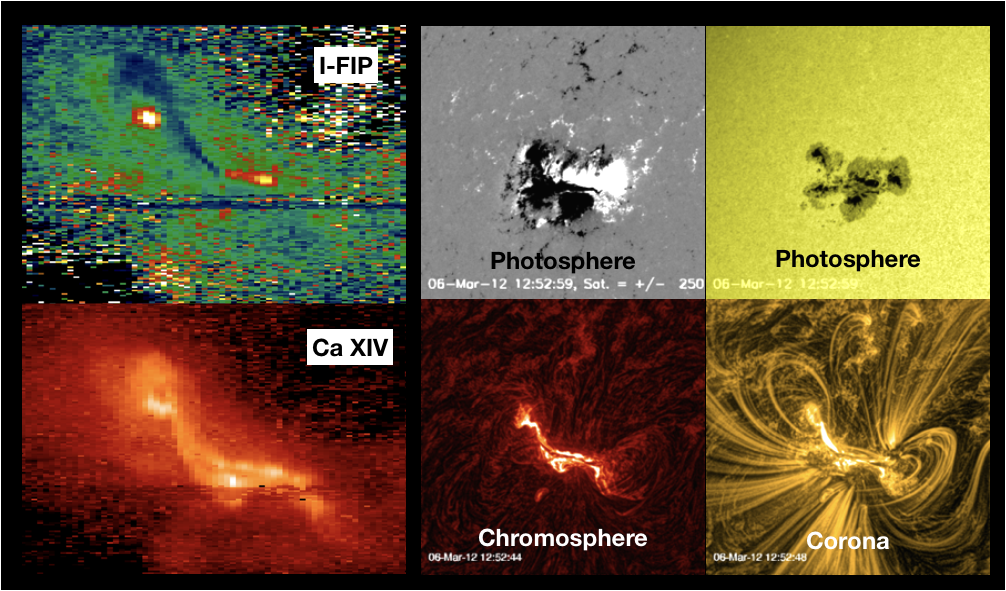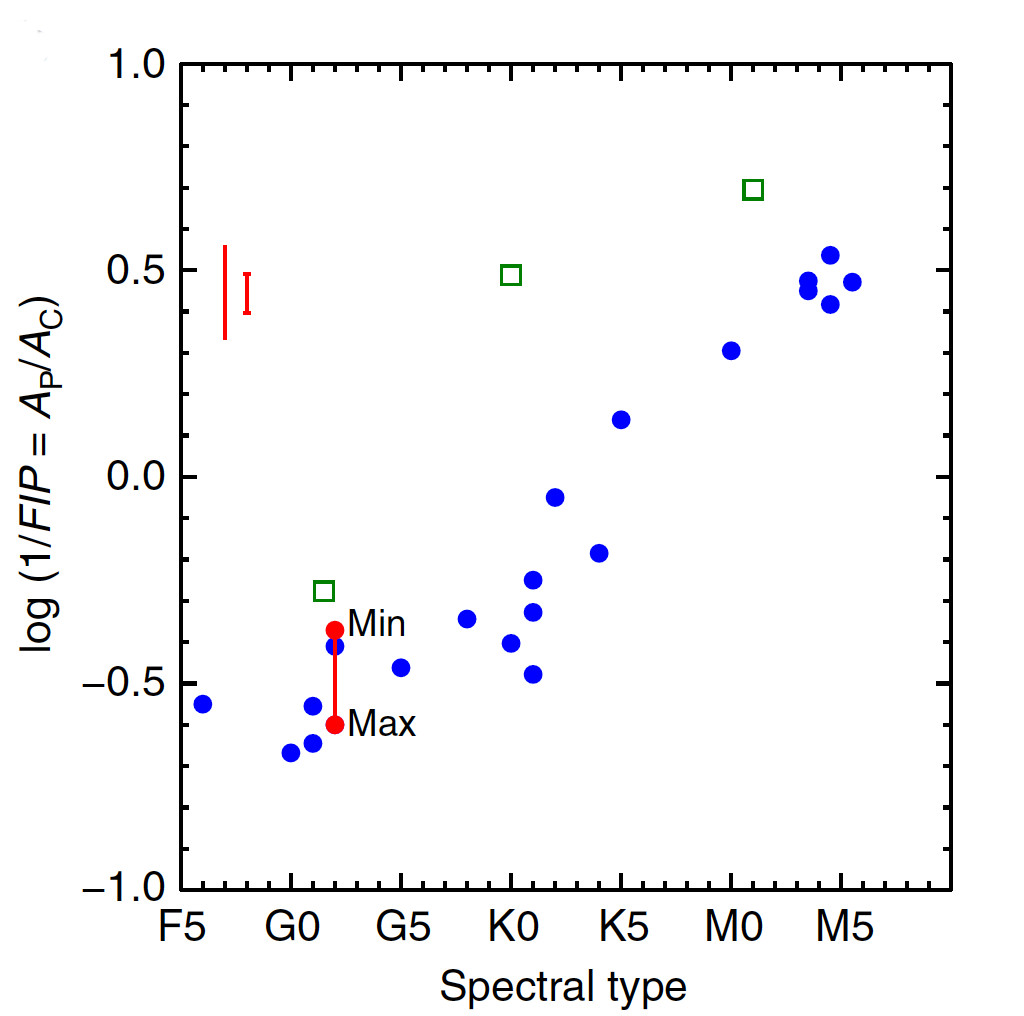|
Inverse-FIP bias in solar and stellar coronae - lesson learned from the Sun
27 - 30 April 2020 - Konkoly Observatory, Budapest, Hungary
Observed variations in elemental abundances depend critically on the first ionization potential (FIP) of the primary elements found in stellar atmospheres. Elements with low FIP are enhanced or depleted in stellar coronae relative to their photospheric abundances. Generally, the coronae of the modestly active Sun and solar-type stars are dominated by the FIP effect while more active stars such as M-dwarfs have inverse-FIP (IFIP) effect dominated coronae. But this is not the complete picture as resolved spectroscopic observations of the Sun have shown significant variation in the spatial distribution and temporal evolution of plasma composition. Recently, embedded in the FIP-effect dominated solar corona, the IFIP effect was detected on the Sun during solar flares.
 Hinode/EIS and SDO/AIA and HMI images of AR 11429 on March 6, 2012. Left: Ar XIV/Ca XIV intensity ratio map (top) and Ca XIV intensity map (bottom). Yellow regions of I-FIP plasma are located in flare loop footpoints above umbrae of coalescing umbrae. Right: Corresponding SDO/HMI line of sight magnetogram and continuum images and SDO/AIA 304 and 171 images.
Hinode/EIS and SDO/AIA and HMI images of AR 11429 on March 6, 2012. Left: Ar XIV/Ca XIV intensity ratio map (top) and Ca XIV intensity map (bottom). Yellow regions of I-FIP plasma are located in flare loop footpoints above umbrae of coalescing umbrae. Right: Corresponding SDO/HMI line of sight magnetogram and continuum images and SDO/AIA 304 and 171 images.
In the first two workshops hosted at Konkoly Observatory, we investigated the FIP and IFIP effects in emerging magnetically complex active regions on the Sun, discussed how the IFIP process may occur in the context of the ponderomotive force fractionation model, and developed a new diagnostic that allows us to determine whether low/high FIP elements are depleted/enhanced in specific solar IFIP events. These results have provided the foundation for our understanding of the plasma composition variability and fractionation processes occurring on the Sun. The aim of the third workshop is to apply this collective knowledge to M dwarf stars to determine whether or not the role of magnetic activity we see in solar IFIP events could be applicable and effective in the coronae of fully convective highly active M-dwarf stars.
 The FIP effect vs the spectral type. (Brooks et al. 2017, Nature Comm.).
The FIP effect vs the spectral type. (Brooks et al. 2017, Nature Comm.).
|
